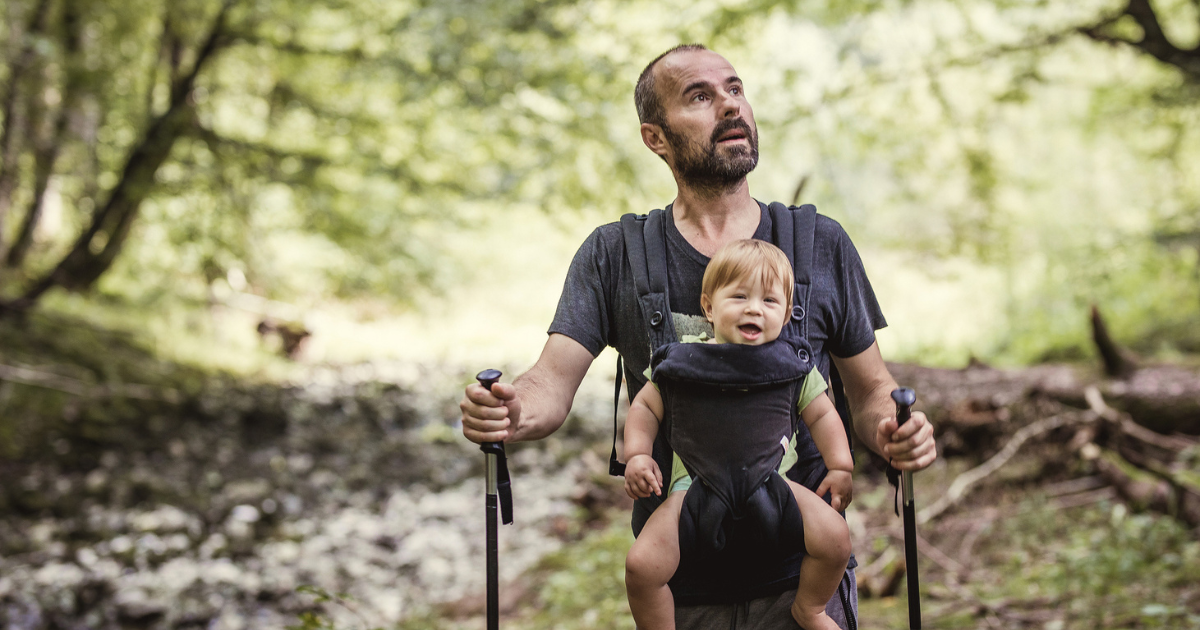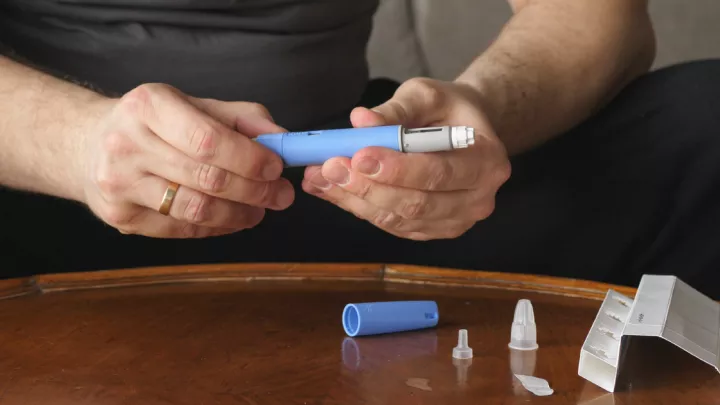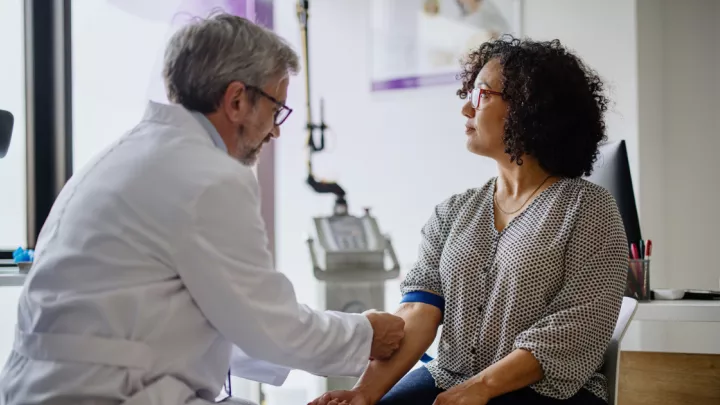Baby items that can hinder hip development, what is infant hip dysplasia and how to avoid container baby syndrome

There are numerous infant equipment options on the market these days. From swings and car seats to jumpers and slings, how can a parent or caretaker know which items are safe and best for their developing bodies?
While we may think specific equipment like jumpers and walkers encourage babies to develop strength and developmental skills, when used incorrectly, they may prevent the proper development of bones, muscles and joints if used too early. Even swaddling too tightly or for prolonged periods can contribute to hip development issues early on.
What does proper hip development look like?
The hip is a joint with a ball and socket. At the top of a baby’s thighbone (femur) is a ball held in what will eventually become a cup-shaped socket in the pelvis. There are growth plates in both the ball and socket. Significant growth occurs from birth to three months old, with another growth spurt occurring at three to six months old. The growth plates fuse for females around year 13 or 14; in males, year 15 or 16.
“When babies are born, the socket (or cup) is more like a saucer,” says Nebraska Medicine orthopaedic surgeon Christopher Deans, MD. “Picture a golf ball on top of a tee. It takes proper positioning of the legs during bone development to deepen the socket and create the proper formation we need as adults.”
What is infant hip dysplasia, and can it cause problems later in life?
Infant hip dysplasia occurs when the hip ball and socket do not develop correctly. Sometimes the condition is present at birth, but it may also develop during a baby’s early bone development when their hip sockets fail to deepen. The diagnosis of shallow sockets may occur as a baby, adolescent, or at any time into the adulthood of a patient.
Although genetics can play a role, it is not a direct cause of the condition (hip dysplasia is 12 times more likely when there is a family history). Hip dysplasia is more common in girls than boys. Potential causes may include:
- A baby’s response to the mother’s hormones during pregnancy
- A small uterus that limits movement
- A breech delivery
- A possible underlying orthopaedic condition
“Parents may not always notice a problem like hip dysplasia, so keeping regular appointments with your pediatrician is important,” adds Dr. Deans. “Most kids will develop normal hips, but sometimes issues arise during the growth process. Pediatricians are trained to screen for potential hip problems at their first exam and every well-baby checkup.”
Signs may include:
- A hip moving out of place
- One leg shorter than the other
- Favoring or limping on one leg once walking
- The space between legs may look narrower or wider than normal
If your pediatrician recommends a referral, find a pediatric orthopaedic specialist. Early treatment is very effective, and the approach will depend upon the child’s age and the severity of the dysplasia. If not treated early, dysplasia can cause problems in adolescence and adulthood.
What to be aware of with infant equipment or techniques
Babies are born with the natural urge to move and explore. For proper hip development, pay particular attention to the M-position of the legs. “You want them to be positioned out and up during the day,” says Dr. Deans. “Any product that holds their legs tight together for long periods is not ideal for hip development.”
Swaddling
Swaddling is a good thing, but limit the time spent swaddling. Avoid wrapping the baby too tight, especially around the hips and legs. In addition, be sure to give your baby plenty of tummy time and back time to allow them to move and wiggle. Weighted swaddling isn’t generally recommended.
Baby-wearing items like slings, wraps and packs
These products keep babies close to the caregiver’s body and can be restrictive by holding their legs too snugly together. When using these items, position them so there’s room for movement in the hips and legs.
Car seats
The use of a correctly installed car seat is critical. Look for one that keeps the baby’s legs in the M-position. Avoid models that hold the legs close together or restrict lower body movement.
Baby seats, high chairs, jumpers and walkers
Babies need time to develop neck and torso strength and control before using these items safely. A good rule of thumb is to wait until a child develops the head and trunk control to sit without assistance. Milestones may differ slightly for each child, so talk with your pediatrician about when these may be safe. In addition, you can rest assured that using jumpers and walkers at the appropriate time does not cause a child to develop bowlegs.
See the International Hip Dysplasia Institute for more information on specific infant products encouraging healthy hip development.
Beware of “container baby syndrome”
Any equipment that limits a baby’s natural movement for extended periods can potentially lead to developmental issues. If a baby moves from one “container” to the next all day, it reduces their opportunity to kick, turn their heads, wiggle and other natural movements that promote healthy development. Caregivers may use various equipment to keep their baby safe while multi-tasking, but “container” time can quickly add up throughout the day. Experts recommend no longer than 20 minutes at one time.
“Along with proper use of infant equipment, trust your health care providers for appropriate screening. If they do recommend further evaluation, be sure to follow through with it. It’s easy, especially with a silent problem like hip development that doesn’t bother babies immediately, to ignore it. But it’s something that can have a big impact in the long term if it’s not addressed.”






